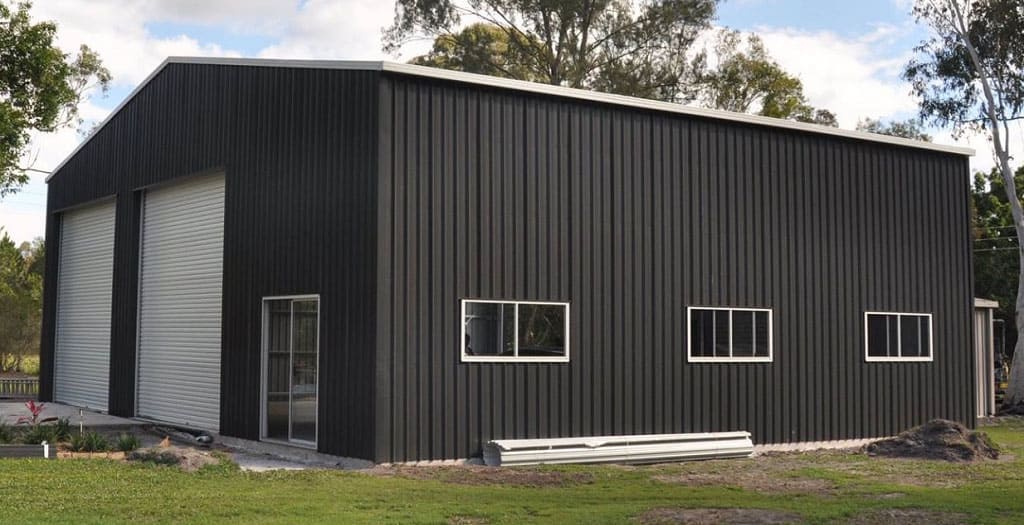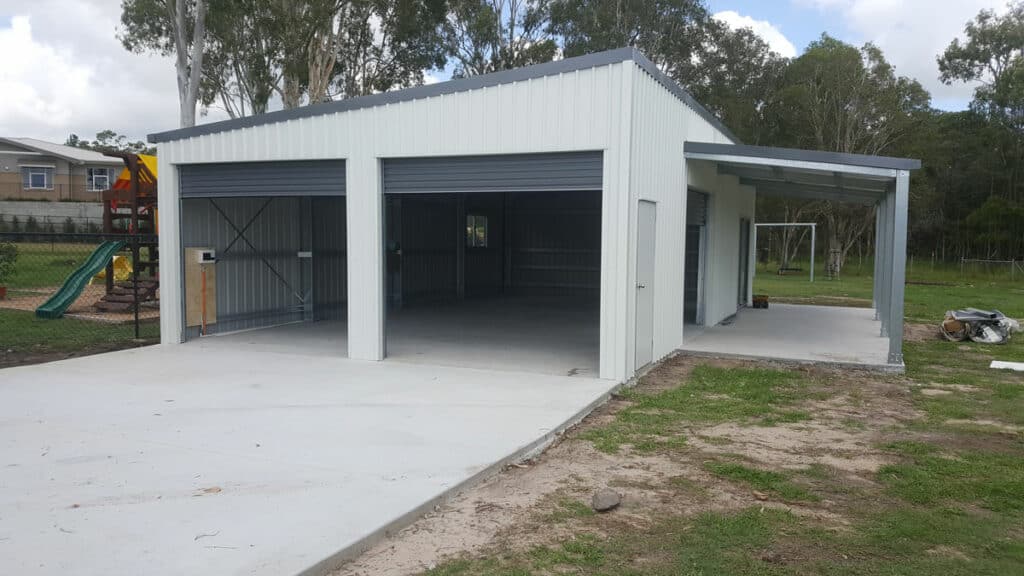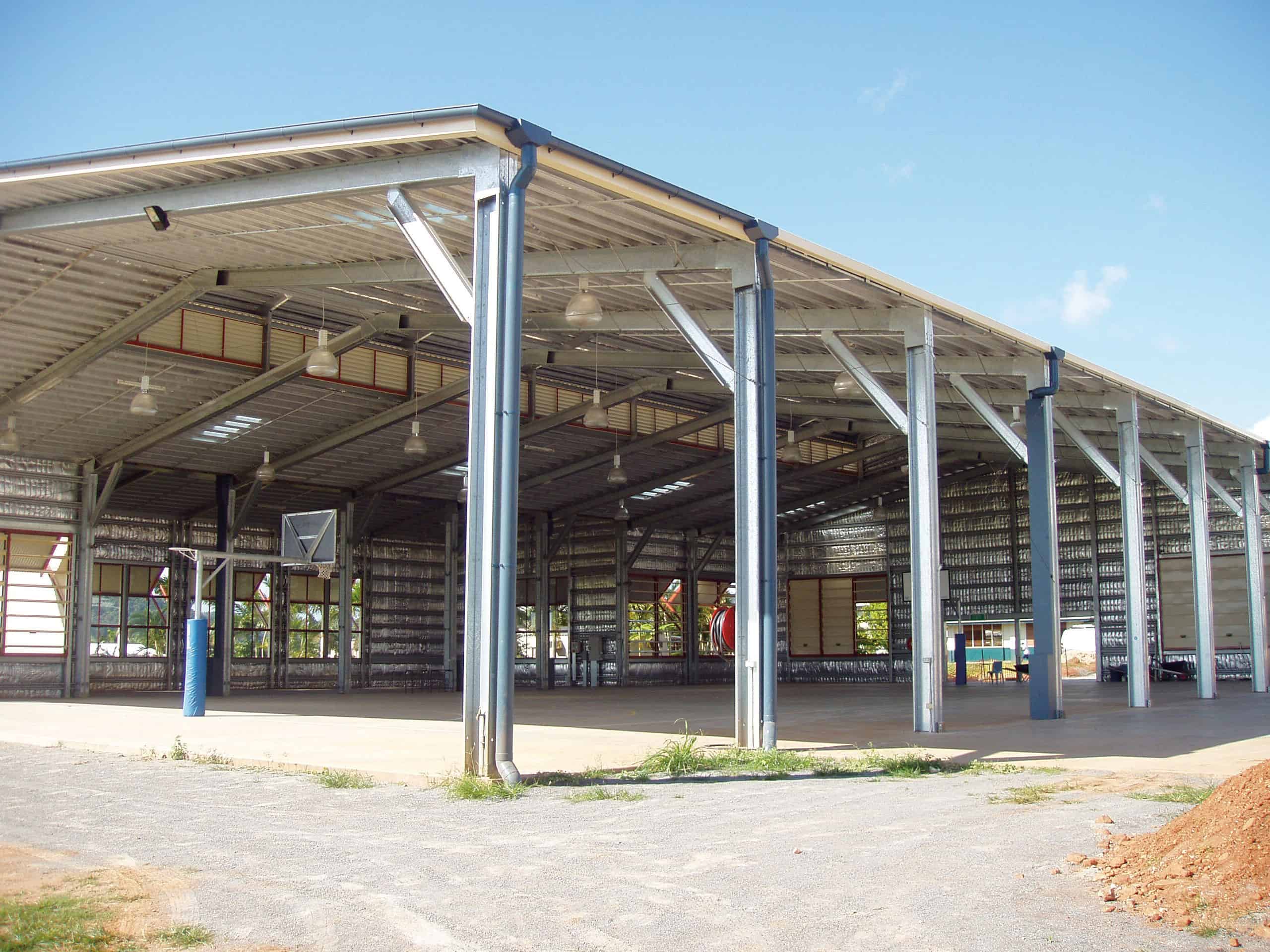There have been many evolutions in the way we quote sheds online, spanning from the very beginning of the internet until now. It’s an ever-changing space that has changed how businesses and people operate in so many areas.
This article takes a dive into what it was, what it grew to be, and where it’s heading. The answers will be a surprise to many.
We also uncover an exciting industry-first innovation that will change the way we quote (while saving time and increasing our leads) into the future…
The early internet days and contact information
Since the inception of the internet, shed retailers who had a presence online have provided a means for their prospective customers to contact them, via their website.
In the early days of the internet, this was a contact number, and/or the physical location of the business being listed on the site. As time went on, an email address was added, with retailers listing a contact email address as well. These eventually became clickable, via a ‘mailto’ link, that opens a new email message within your computer’s email client when it is clicked on.
Then, as technology and systems expanded, so too did the contact methods; and the method of contact morphed into the forms that we see today. These days, most, if not all, shed retailers in Australia have some sort of form that the prospect can fill out, in order to enquire and/or get a quote.
The many forms of forms
Today there are many forms available. Most website forms will now send an email to the shed retailer, via the back-end setup of your website. Some outdated systems may require you to log into the back end of your website to view these forms, however.
Up until recently, the best way for a customer to get a quote online from a shed retailer was to fill out a form on the website, with their enquiry and as many details as possible; requesting a quote to be sent through. The shed retailer would then make contact, over the phone or email, emailing back a quote when this was complete.
Some forms take a simple ‘send your enquiry’ or ‘request a call back’ approach. Others ask for much more detail, with a bunch of questions that attempt to get as much information as possible.
Some quote request forms are more sophisticated quoting systems, that provide some illusion of the customers’ designing their own sheds online.
However, in most cases, this still involves the shed retailer contacting the client for more information, and talking through the design. And it then requires the retailer to turn the customer’s sketch into an actual shed design; confirming the details along the way, before being able to send a quote.
There’s a new development, though, that will change this process and become a turning point in the industry. It’s new and so not yet widely used… which presents a huge advantage to those who are in the know… we’ll cover that shortly…
The quoting forms of today are outdated
While these more sophisticated quoting systems are much newer than those internet forms and contact listings of the past, the reality is that these systems are outdated. Because they do not provide a platform for the consumer to get a quote online in real-time. And unfortunately, in 2023, this does not align with consumer expectations — or attention spans.
In 2023, consumers have an expectation that when they research a product online, they can get a price right then and there. This is as true for sheds as it is for any other product.
And It’s been the case for at least 10 years now.
The latest in cutting-edge technology has filled this gap — but this technology is so new, that it’s a world-first… and is taking the industry at large, used to old processes, a while to catch on. But we anticipate it’s going to be a game-changer in coming years… and earlier for those who take advantage of a competitive edge now.
Short attention spans, big expectations
The internet’s huge growth over the last few decades, and the development of smartphones, smart devices and even home voice-activated assistants, have created a high demand for fast answers. Immediately. And short attention spans.
Website marketers know that, on a website, you have eight seconds to capture the viewer’s attention, or, statistically, you lose a potential customer. Eight seconds.
Videos on social media and YouTube that go for longer than 30 seconds see drop off; unless they are engaging enough to the user that they capture their attention throughout, or the message is highly relevant to that user. Because attention spans are short these days, among all the short funny videos, internet memes and constant scrolling entertainment.
If you Google ‘Order a shed Australia’, the leading internet search engine will return “about 58,400,000 results” in 0.47 seconds. That’s 58.4 million internet pages coming up in search results, in not quite half a second.
It’s a similar story for just about every question you can imagine asking. The only delay is in how fast you can type it, whether that’s on your laptop or desktop computer, your ipad, or your phone. The latter two being able to travel anywhere with you. With voice commands enabled, it’s even faster; just a matter of how fast you can ask the question verbally.
So it’s no surprise that consumers today want instant answers. And have short attention spans.
So they don’t have the time to spend sending off an email request, waiting days to weeks for a reply, having to spend time on the phone with the retailer, answer more questions, then wait another few days or weeks.
This whole process, and only then do they learn what the price of the shed that they want to buy is. And whether that shed retailer can even design the shed they’re thinking of.
So what do they do? They look elsewhere. They submit multiple quote requests. Or they just keep searching until they can get an answer then and there.
Because consumers of today are used to instant gratification. And they’re not afraid to look around until they get it. It’s faster than waiting on a slow process, after all.
The need for instant pricing information
The reality is that in 2023, consumers have an expectation that when they research a product online they can get a price, right then and there.
As they do with almost any other product.
So it’s a no-brainer that any company that was able to provide such a feature on their website would have an immediate marketing advantage. If only you could. (Spoiler alert: you now can!).

From a shed retailer’s point of view
From the shed retailer’s point of view, once a lead is received (either in written form or as an Avatar), the salesperson then needs to interpret the customer’s needs and design the shed. They need to do so in their own software to be able to prepare a quote.
This, of course, takes time. Depending on how many quotes the salesperson needs to do that day, it might take several working hours, or business days to get back to the prospect. That’s if there’s no further information needed, nothing to clarify, and everything is straightforward and clear-cut, with no room for misinterpretation.
But by this time, the prospect has probably moved on to another supplier.
And even then, following this interpretation and quote process, there is the inevitable and often frustrating further back and forth with the customer to fine-tune the design after the customer has received the drawings and the quote. Can we update this? Can we get the price down here? What if we added that?
What if we were to tell you that this is no longer a problem for some shed retailers in Australia? And could be a huge competitive advantage for you, too?
An ongoing problem… until very recently
The quote and design process and its limitations (and huge delays, which do not meet today’s consumer expectations) have been a challenge for the shed industry since the internet began.
It’s been like this because it’s been very difficult to develop, or even find, a solution.
Yet, as with all progress, it was inevitable that someday a company would develop a solution to fix this.
And they did. In 2022, a world-first, exciting innovation quietly made its way into the Australian shed industry. This has provided a huge edge for the shed retailers that have jumped on board.
In game-changing news, a shed software has now been created and released, with a retail interface that solves all of these problems.
The first-of-its-kind, plug-in online quoting software has been developed by Quotec Pty. Ltd. They’ve christened it Quotec Now.
Quotec Now turns enquiries into completed designs & quotes, capturing more leads than ever before and turning website visitors into warm prospects. It involves a retail interface that sits on your website, and talks directly to your back-end shed software. The customer-facing interface lets consumers design and quote their own shed online… in real-time. Giving them a quote within minutes — and giving you their contact details, and complete design. Minus the guesswork.
This shed software runs over the internet in real-time. It plugs into any existing website and is the beginning of the end to traditional online forms and manual interpretation of Avatars, for all shed companies.
This exciting development has shaved days and weeks off the design and ordering process for those shed retailers who have started using it — removing a painful back and forth from the equation, turning the quote process into an instant gratification for the consumer, and all the while capturing more leads than ever before.
With this new tech, the customer now does the work for you to quote and design. And when they’re ready to go, or if they want an adjustment, you can access the design in your own back-end shed software; fully specced, engineering compliant and ready to go and finalise the order.
The future of quoting sheds
While this new technology has seen great success for those who have taken it up as early adopters, the benefits to businesses, efficiencies and revenue are not something that is going to remain a secret for much longer.
Over the next few years, it’s expected that the use of this new technology will become the new norm. So what now gives retailers a huge step up above the competition, wil,l in the near future become a standard to keep up with the pack. And any who do not use it will most probably fall behind.
Those that now can offer these instant answers to their customers will outpace their competition, as prospective buyers with short attention spans will flick to those who can provide instant answers and instant gratification. And the need for quick answers will drive more and more people to become leads – and rapidly make a decision and proceed, for a faster end-result.
The shed retailers that fail to move with the technology will find themselves with ever-diminishing online requests for shed quotes.
It’s also expected that other software developers will eventually attempt to have their own version of this online quoting software for sheds in the coming years.
In the natural evolution of technologies and processes, innovation is quickly picked up on and implemented across the board; much like the internet’s own evolution. So we expect to see others try to replicate, or reverse-engineer this world-first innovation, to try to keep up. It’s unclear as to whether this will be successful; but it’s almost inevitable that others will try.
The shed industry at large will benefit hugely from this change.
And it’s those that are on the forefront of this innovation and early adoption of it who stand to benefit the most. As it’s they who will provide the instant answers that consumers of today are looking for, while others are still behind the game.
And for those customers, when they get instant answers, there’s no need to look further. No need for delay.
Embracing change and longevity
Embracing change and keeping up with technology is vital for business longevity in any industry. A few real-world examples show the dangers of failing to embrace change, or being on the later-adoption phase.
Kodak is one big example. Kodak’s failure to embrace the digital age saw them fail and disappear into bankruptcy. They brought a revolution with them in the 20th century, and were the biggest name in the photography world for a while; as they brought cameras to every household, where previously only big companies could afford to use them.

Why? They ignored the research and new developments when digital photography started to grow. The digital age came into play and grew, but they ignored the time to transition from analog to digital. One of their electrical engineers even discovered the tech behind it early on… but Kodak ignored this. Even when things were looking bad, the company was adamant that analog photography was still far superior to digital. And they failed to get on board with the digital age. And the move in the general public towards the digital world. For 10 years.
In 2012, they declared bankruptcy.
Nokia has a similar story — once the largest mobile seller in the world, they scoffed at the release of the iPhone. Only to fade into the distance as Samsung and Apple took over the market.
Just as fax machines made telegrams obsolete and emails took over from fax machines, every technology will eventually become obsolete. What’s important is embracing change and moving with the new technologies as they emerge. Those who are at the forefront benefit and lead the pack in their results and growth. Those who adopt with the rest of the world stay in business. And those who fall behind… fall behind.
The shed industry has changed so much already from the early days of the internet to now. And we’re constantly seeing change, with this latest development, and into the future.

